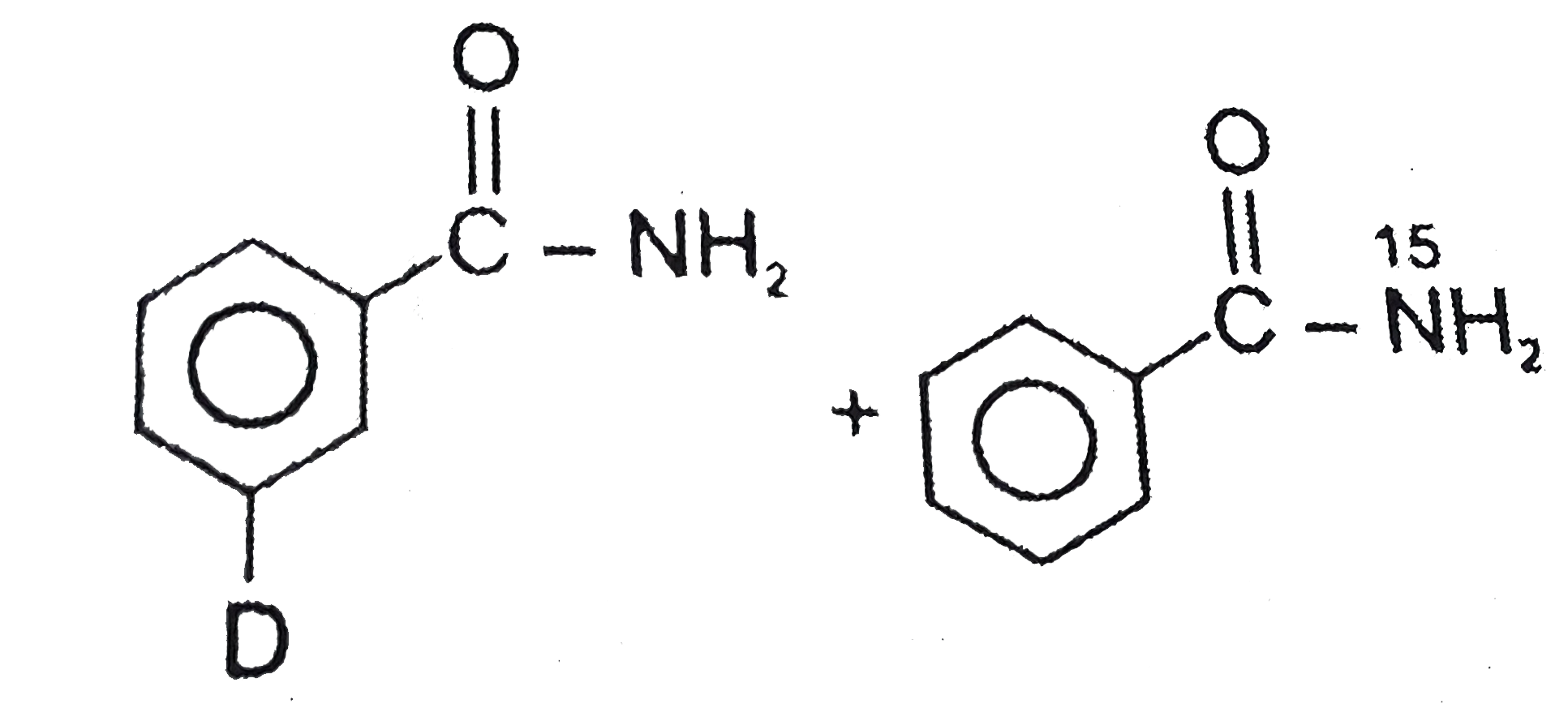Diborane reacts with ammonia under different conditions to give :
B2H6.2NH3
B12H12
B3N3H6
(BN)x
The correct Answer is:A, C, D
To solve the question regarding the reaction of diborane (B2H6) with ammonia (NH3) under different conditions, we will analyze the reactions based on the amount of ammonia and the temperature conditions.
1. Identify the Reactants:
- The reactants in this scenario are diborane (B2H6) and ammonia (NH3).
2. Condition 1: Ammonia in Less Amount at Low Temperature:
- When diborane reacts with a small amount of ammonia at low temperatures, the product formed is a complex known as B2H6·2NH3.
- This is a stable adduct where diborane coordinates with ammonia.
3. Condition 2: Ammonia in Excess at High Temperature:
- If ammonia is present in excess and the temperature is high, the reaction leads to the formation of BN, which is referred to as inorganic graphite.
- This product is formed due to the polymerization of boron and nitrogen under these conditions.
4. Condition 3: Ammonia and Diborane in a 1:2 Ratio at High Temperature:
- When diborane and ammonia are mixed in a 1:2 ratio and subjected to high temperatures, the product formed is B3N3H6, commonly known as inorganic benzene.
- This compound has a cyclic structure similar to benzene but contains boron and nitrogen.
5. Conclusion:
- The reactions yield different products based on the conditions of temperature and the ratio of reactants. The products formed are:
- B2H6·2NH3 (low temperature, less ammonia)
- BN (high temperature, excess ammonia)
- B3N3H6 (high temperature, 1:2 ratio of diborane to ammonia)
Final Answer:
The products formed when diborane reacts with ammonia under different conditions are:
- B2H6·2NH3
- BN (inorganic graphite)
- B3N3H6 (inorganic benzene)
- The reactants in this scenario are diborane (B2H6) and ammonia (NH3).
- When diborane reacts with a small amount of ammonia at low temperatures, the product formed is a complex known as B2H6·2NH3.
- This is a stable adduct where diborane coordinates with ammonia.
- If ammonia is present in excess and the temperature is high, the reaction leads to the formation of BN, which is referred to as inorganic graphite.
- This product is formed due to the polymerization of boron and nitrogen under these conditions.
- When diborane and ammonia are mixed in a 1:2 ratio and subjected to high temperatures, the product formed is B3N3H6, commonly known as inorganic benzene.
- This compound has a cyclic structure similar to benzene but contains boron and nitrogen.
- The reactions yield different products based on the conditions of temperature and the ratio of reactants. The products formed are:
- B2H6·2NH3 (low temperature, less ammonia)
- BN (high temperature, excess ammonia)
- B3N3H6 (high temperature, 1:2 ratio of diborane to ammonia)
The products formed when diborane reacts with ammonia under different conditions are:
- B2H6·2NH3
- BN (inorganic graphite)
- B3N3H6 (inorganic benzene)
Topper's Solved these Questions
- P-BLOCK GROUP 13 - BORON FAMILYBOOK - CENGAGE CHEMISTRY ENGLISHCHAPTER - P-BLOCK GROUP 13 - BORON FAMILYEXERCISE - Exercise (Single Correct)
86 Videos
- P-BLOCK GROUP 13 - BORON FAMILYBOOK - CENGAGE CHEMISTRY ENGLISHCHAPTER - P-BLOCK GROUP 13 - BORON FAMILYEXERCISE - Exercise (Assertion-Reasoning)
13 Videos
- P-BLOCK GROUP 13 - BORON FAMILYBOOK - CENGAGE CHEMISTRY ENGLISHCHAPTER - P-BLOCK GROUP 13 - BORON FAMILYEXERCISE - Exercise (Linked Comprehension)
37 Videos
- ORGANIC REACTION MECHANISMBOOK - CENGAGE CHEMISTRY ENGLISHCHAPTER - ORGANIC REACTION MECHANISMEXERCISE - Analytical and Descriptive
6 Videos
- P-BLOCK GROUP 14 - CARBON FAMILYBOOK - CENGAGE CHEMISTRY ENGLISHCHAPTER - P-BLOCK GROUP 14 - CARBON FAMILYEXERCISE - Exercises Archives (Subjective)
9 Videos
Similar Questions
Chlorine reacts with dilute NaOH under ordinary conditions to give
View SolutionDiborane reacts with water to form:
View Solution under Hofmann conditions will give:
under Hofmann conditions will give:
View SolutionDiborane reacts with carbon monoxide to form
View SolutionSalicylic acid is treated with bromine under two different conditions
as shown :

View Solution
(D) on reaction with phenol under alkaline conditions gives :
View SolutionHow does HI react with diethyl ether under different conditions?
View SolutionMatch the compression factor under different condition (in List-I) with its value (in List-II)

View SolutionExcess fluorine reacts with ammonia to form :
View SolutionDiborane reacts with ammonia to initially forms X which on further heating gives borazine X is
View Solution
